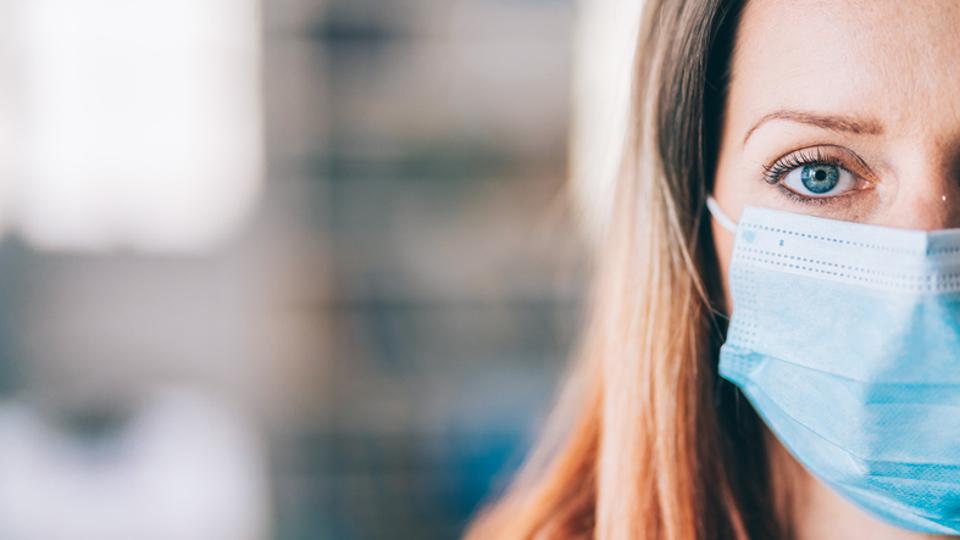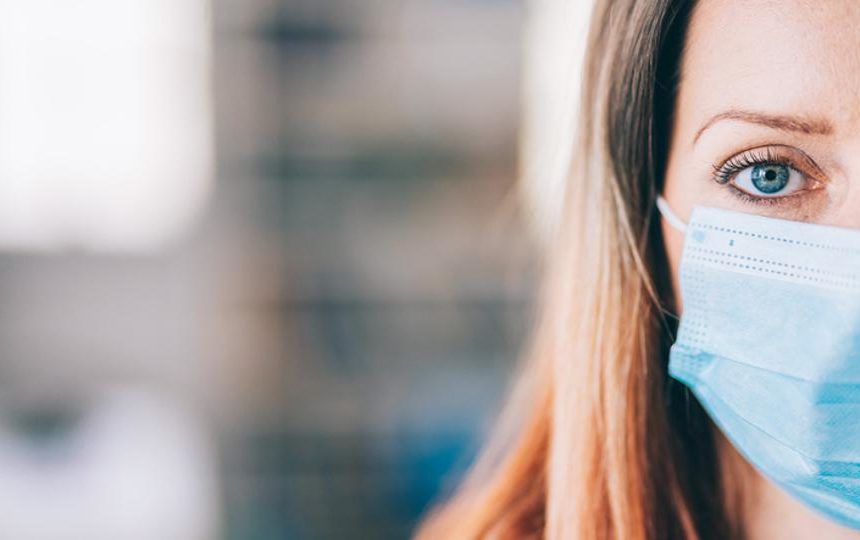Part of Kathy Caprino’s series “Today’s True Leadership”
The Covid-19 pandemic has impacted millions of lives around the world, leading us to rethink so much of what we’ve taken for granted in our lives and work in the past decades, and also what we’ve tolerated and accepted that needs revision and change. Crisis times such as these often uncover ways in which our society and culture—and its biases, imbalances and injustices—cause certain groups to be negatively and dramatically impacted through the crisis in ways that other groups are not.
To learn more about how women have been negatively impacted by the pandemic in ways that men have not, I caught up with Lori Sokol, PhD, a veteran journalist and trained psychologist who currently serves as the Executive Director and Editor-in-Chief of Women’s eNews, an award-winning, non-profit news organization covering the most crucial issues impacting women and girls throughout the world. Celebrating its 20th anniversary this year, it has over 2.5 million readers.
In Sokol’s new book She Is Me: How Women Will Save The World, Sokol takes readers into the hearts and minds of thirty women who have shaped her, and shaped this world, as warriors for peace, humanity and equality, and have done so by successfully using qualities that are in stark contrast to what patriarchal cultures have taught us to believe are most effective.
Here’s what Dr. Sokol shares:
Kathy Caprino: Lori, from your perspective and from the research that’s coming out now, how is the pandemic particularly impacting women and girls?
Lori Sokol: According to The Bureau of Labor Statistics, women accounted for 55% of the 20.5 million workers who became unemployed in April, compared to a 13% unemployment rate for men. There are a number of reasons why this has occurred including that women comprise a majority of primary caregivers and workers in the service industry, two areas that have been most impacted by Covid-19. But the financial impact is only half the story.
Since a majority of frontline health workers are also women, they have been more apt to contract the virus, and suffer its health consequences.
Caprino: Many of us have read the reports and new information emerging that domestic violence in homes has become more frequent, severe and dangerous due to the restrictions in movement. What is contributing to the marked increase in domestic violence we’re seeing throughout the US, and around the world, at this time?
Sokol: The world is witnessing an increasing amount of sexual exploitation, forced marriage, domestic violence and pregnancy. Yet, at the same time, abortion services are being reduced as many clinics are being forced to close with extremists citing the women’s safety from the pandemic as an excuse.
The global increase in domestic violence cases that have been reported is strongly due to growing unemployment and mounting financial stress in families. Abusers often resort to increasing consumption of alcohol or drugs during stressful times, and women are now finding themselves behind closed doors with their partners on lockdown. This eliminates opportunities for support from family and friends, as well as requesting other resources to stay safe. An increasing number of victims are now finding themselves isolated in violent homes, and these are only the cases that are reported.
Further, rape crises centers and other professional organizations dedicated to assisting female victims of domestic violence are now understaffed, due to the coronavirus, and therefore are of little help. In normal times, deaths from domestic violence rarely make the news. But due to the coronavirus, domestic violence is now deemed newsworthy.
It is important to note, however, that when the media reports on the increasing violence women are experiencing at home, it is not the coronavirus that is responsible, but the abuser.
Caprino: With women comprising a majority of the ‘essential workers,’ what issues has the pandemic exposed? (for instance, unequal pay, unequal opportunity, etc.)
Sokol: Women make up the majority of frontline healthcare workers, primary caregivers, and workers in the service industry. As a result, they have been, and continue to be, at the forefront of exposure to the pandemic.
In a recent survey of 104 countries, women were found to provide an average 67% of the health workforce, including 80% of nursing staff. Still, women earn only a fraction of the income that men earn for the same work. Therefore, not only does women’s work put their lives under greater threat to their health, but they are paid less for doing so.
This is exacerbated by the fact that most personal protection equipment is not made to fit women properly. According to the Centers for Disease Control and Prevention, it is critical that PPE fit properly to ensure proper protection, including the wearing of gowns, gloves and goggles. Yet a 2016 survey of 3,086 women conducted by the Institute of Mechanical Engineers Support Network found that just 29% of the PPEs were designed to fit women correctly.
Caprino: How have stay-at-home orders impacted the traditional roles of husband/wife and father/mother?
Sokol: Unfortunately, mothers are still shouldering the bulk of the caregiving, even though most fathers are now at home full time. As unpaid caregivers, women are still performing 76.2% of total hours of unpaid care work, more than three times as much as men, according to the International Labour Organization (ILO).
Almost half of fathers with children under the age of 12, however, have contended in a recent survey that they are spending more time on childcare than their spouses. Yet, only 3% of wives reported that their spouses are doing more.
Fortunately, the pandemic has now elevated the role of childcare as an essential service. In a recent op-ed, NYS Lt. Governor Kathy Hochul shared that when she asked the CEOs of two large corporations—one in upstate and one downstate, “What’s the biggest barrier to rebuilding New York in the aftermath of the pandemic?” independently, and with neither missing a beat, they both responded, “Childcare.”
As co-chair of New York State’s Child Care Availability Task Force, Hochul announced $65 million in federal CARES Act funding available for childcare providers statewide through the New York Forward Child Care Expansion Incentive program. This adds to $30 million in federal funding announced in April to provide childcare scholarships to all essential workers.
Caprino: How is the pandemic particularly impacting the mental health of women and girls?
Sokol: UNESCO estimates that over 89% of school-age children are out of school, which represents 1.54 billion children including nearly 743 million girls. Over 111 million of these girls are living in extreme poverty and where gender disparities in education are highest. For most of these girls, their only way out of poverty is through education, which is now unavailable to them. This leads to feeling sadness, depression, and hopelessness.
It has also been found that Covid-19 has had a greater impact on the mental health of women than men. Of the women who responded to a recent survey, 53% said that Covid-related stress has had a negative impact on their mental health, compared to only 37% of men, and that difference rises to 25% when comparing mothers of children under 18 to fathers (57% vs. 32%).
This is another example of how the pandemic is bringing issues that have long been ignored to the surface. There is a new understanding of how ‘women’s work’ is being undervalued, and how challenging it is for a parent to effectively juggle career and family responsibilities.
Caprino: Finally, how is the pandemic influencing pregnancy, childbirth, and the use of midwives or doulas?
Sokol: The pandemic has further restricted access to contraception, and it is projected that there will be over seven million unplanned pregnancies in low- and middle-income countries throughout the world.
Further, for every three months that the lockdown continues, the U.N. Population Fund (UNFPA) estimates that an additional two million women will be not be able to access contraceptives.
Additionally, with hospitals around the country filled with Covid-19 patients, more pregnant women are choosing to give birth at home, and the advantages of doing so are becoming more apparent. By giving birth in one’s home instead of a hospital, family members can be present during childbirth, thereby avoiding visitor or guest restrictions that have been existent in hospitals during the pandemic.
Concurrently, the virus has shed new light on many other benefits of using midwives and doulas during childbirth. In a 2013 study, it was shown that expectant mothers who were matched with a doula had better birth outcomes.
Doula-assisted mothers were four times less likely to have a low birth weight (LBW) baby, two times less likely to experience a birth complication involving themselves or their baby, and significantly more likely to initiate breastfeeding.
One of the reasons cited for the success includes better communication and encouragement from the doula throughout the pregnancy. This has shown to be particularly true for pregnant women from disadvantaged communities, particularly if they experienced language or cultural barriers.
“A skilled doula empowers a woman to communicate her needs and perceptions and actualize her dream of a healthy, positive birth experience.”
Caprino: Can you offer any last words of hope or inspiration for women around the world?
Sokol: Most of our hope for a safe and secure future lies in the people who are most affected by the pandemic, and most apt to survive: women.
As my book has shown, and as the pandemic has exposed, women in leadership roles have proven to be most successful at minimizing the impact of Covid-19 in the countries they lead. Look at New Zealand, Iceland, Finland, Denmark, Taiwan and Germany— each country home to female leaders.
They have been most effective at minimizing their countries’ death toll, as well as the pandemic’s impact on their economies.
Yet, in patriarchal-run countries, like the United States, the number of cases, deaths and economic impact continue to be staggeringly high. The US Coronavirus Task Force, for example,includes only two females of its 27 members.
Further, only 10 of the 31 members and advisers of the World Health Organization’s Emergency Committee on Covid-19 are women. It has been proven time and time again that women are doing a much more effective job at home, on the frontlines of the pandemic, and as heads of states.
As the November elections bloom, it is crucially important for Americans to vote, and vote for the candidates who are committed to putting people’s safety and welfare before profits, and who understand clearly the value and positive economic impact of supporting mental health as much as physical health, and putting the needs of women in equal balance with those of men.
Only then can we shift away from policies, laws, mores and rules that jeopardize the health and growth of women, families, and the economy.
For more information, visit She is Me: How Women Will Save The World.
To build a more powerful and impactful career, read Kathy Caprino’s new book The Most Powerful You: 7 Bravery-Boosting Paths to Career Bliss.

